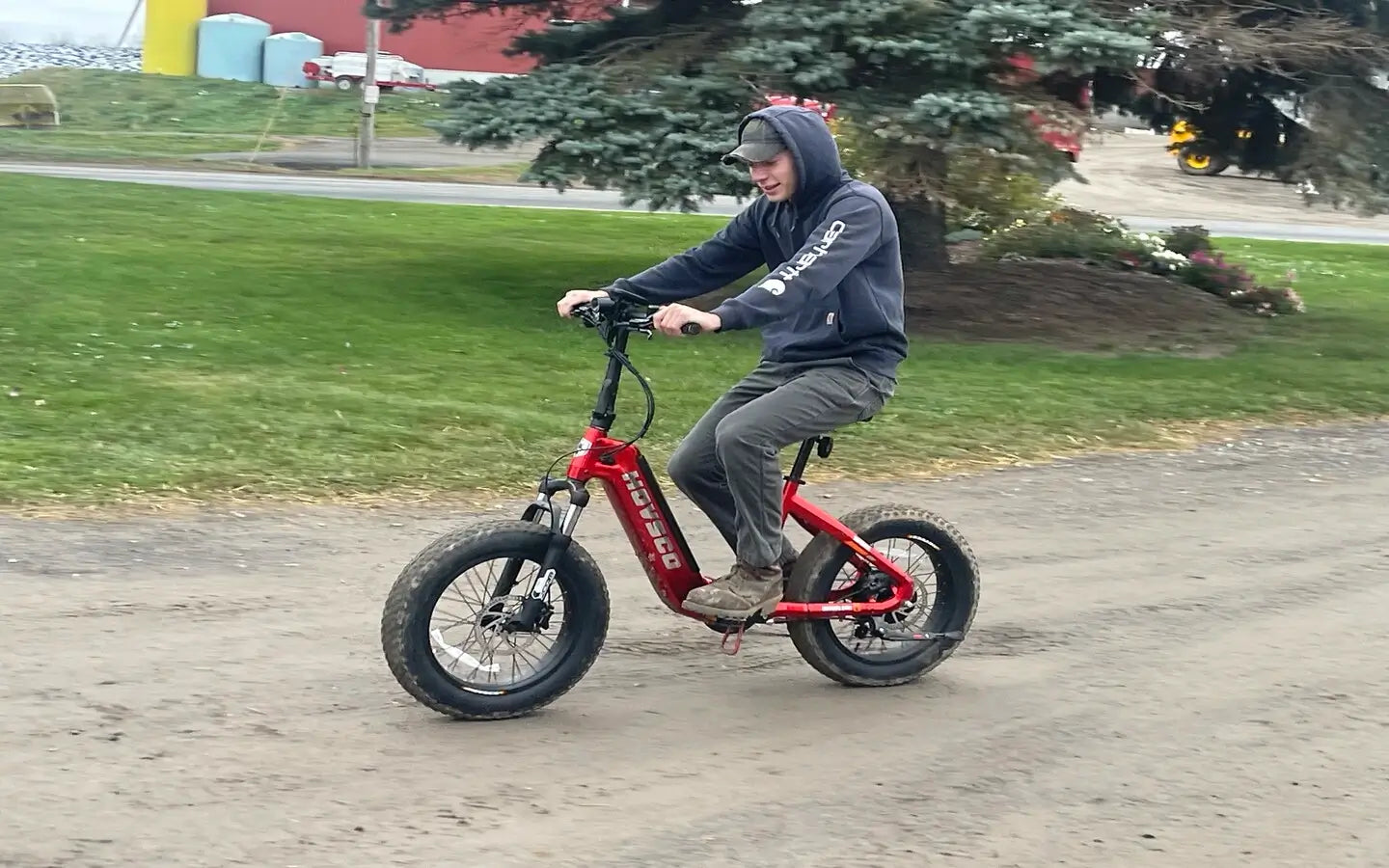
- by LiuJiazhu
What Maintenance Steps Optimize Cargo Bike Longevity?
- by LiuJiazhu
Regular cleaning, lubrication, bolt torque checks, brake maintenance, tire pressure monitoring, and battery care optimize cargo bike longevity. Prioritize drivetrain cleaning, rust prevention, and component alignment. For e-cargo bikes, maintain battery charge cycles and avoid extreme temperatures. Proactive maintenance prevents wear, ensures safety, and extends lifespan by 30-50%.
Clean cargo bikes every 2-3 weeks or after muddy/rainy rides. Lubricate chains weekly using wet or dry lube based on climate. Heavy loads accelerate drivetrain wear, demanding stricter schedules.
Beyond basic cleaning, focus on grit removal from chains, cassettes, and derailleurs—key areas where debris causes 70% of drivetrain wear. Use biodegradable cleaners for eco-friendly washes, and avoid high-pressure hoses near bearings. Pro Tip: After cleaning, wipe chains with a microfiber cloth before applying lube to prevent abrasive paste formation. For example, urban delivery bikes in dusty cities might need lubrication every 100 miles, while rural bikes could stretch to 150 miles. But what if you skip a lube session? Friction spikes by 40%, accelerating chain stretch and costing $80+ in premature replacements. Always match lube type to weather: wet lubes for rain, dry for arid climates.
| Condition | Cleaning Frequency | Lube Frequency |
|---|---|---|
| Urban (Dusty) | Weekly | Every 100 miles |
| Rural (Muddy) | Post-Ride | Every 75 miles |
| Dry Climate | Biweekly | Every 150 miles |
Loose bolts cause frame misalignment and component failure. Check cargo racks, stem, and axle bolts every 100 miles or monthly. Over-tightening strips threads, while under-tightening risks sudden detachment.
Cargo bikes endure 2-3x more vibration than standard bikes due to heavy loads and wider tires. Use a torque wrench set to manufacturer specs (typically 4-8 Nm for rack bolts). Pro Tip: Mark bolts with paint pens to visually detect loosening. For instance, a loose rear rack bolt on a 100-pound load can shear off within 50 miles, potentially causing accidents. Why risk it? A $30 torque wrench prevents $400 frame repairs. Key areas: seatpost clamps (12-15 Nm), stem bolts (5-8 Nm), and cargo platform mounts (6-10 Nm). Practically speaking, aluminum frames are especially prone to cracking if bolts exceed torque limits.
| Component | Recommended Torque | Risk of Ignoring |
|---|---|---|
| Cargo Rack | 6-8 Nm | Frame cracks |
| Stem Bolts | 5-7 Nm | Handlebar slippage |
| Axle Nuts | 15-20 Nm | Wheel detachment |
Inspect brake pads every 200 miles and replace if under 1mm thick. Adjust mechanical brake cables monthly; bleed hydraulic systems annually. Cargo bikes need 20% more stopping power, so pad alignment is critical.
Heavy loads increase brake rotor warping risks—check for rub or pulsation weekly. For hydraulic brakes, monitor fluid levels and watch for spongy levers indicating air bubbles. Pro Tip: Sand glazed brake pads with 120-grit paper to restore friction. Imagine hauling 150 lbs downhill with worn pads: stopping distance doubles from 20ft to 40ft at 15mph! Rotors thicker than 1.5mm are safe; below 1.0mm demands replacement. Transitioning to wet conditions, organic pads outperform metallic ones in rain but wear faster. Always match pad material to riding style and climate.
Under-inflated tires cause sidewall cracks and rim damage. Inflate to 35-60 PSI (varies by tire width). Check pressure weekly—loads over 100lbs may require 10% higher PSI.
Wide tires (2.4”-3.0”) on cargo bikes spread load but lose 2-3 PSI weekly. Use a floor pump with a gauge—hand pumps lack precision. For example, a 40 PSI tire at 30 PSI increases rolling resistance by 18%, forcing motors (on e-bikes) to work harder and draining batteries 25% faster. But how does pressure impact rims? Low PSI allows rim strikes on potholes, causing $200 wheel trueing costs. Pro Tip: Add tire liners if carrying sharp-edged cargo to prevent punctures. Transitioning seasons: drop PSI 5-10% in winter for better traction.
Store batteries at 20-80% charge and 50-77°F. Avoid full discharges—they degrade lithium cells 3x faster. Clean terminals quarterly with contact cleaner to prevent corrosion.
E-cargo bike batteries cost $500-$1,500, making maintenance non-negotiable. Partial charges (20%-80%) extend cycle count from 500 to 1,200+. Pro Tip: Never leave batteries plugged in overnight after reaching 100%—overcharging stresses management systems. Imagine a battery stored at -10°C: capacity drops 30% permanently. For weekly riders, perform a full discharge every 3 months to recalibrate charge indicators. Always remove batteries before washing the bike—water ingress voids 90% of warranties.
Replace headset, wheel, and bottom bracket bearings every 2,000 miles or if you feel grinding/gritty movement. Water exposure accelerates wear—inspect after heavy rain rides.
Sealed cartridge bearings last longer (3,000+ miles) than cup-and-cone types (1,500 miles). Pro Tip: Repack loose ball bearings with marine-grade grease annually for wet climates. A worn headset bearing causes sluggish steering, risking accidents with top-heavy loads. Why ignore that wobble? Replacing a $15 bearing early avoids $200 fork damage. For DIYers, use bearing presses—hammering damages races. Transitioning to noise cues: squeaks indicate dryness; rumbling means replacement is overdue.
Avoid car soap—it contains degreasers that strip bike lubricants. Use bike-specific cleaners to protect drivetrain components.
How often should I check cargo bike tire pressure?Check weekly or before heavy loads. Air loss of 2-3 PSI daily is normal—top up accordingly.
Do cargo bike chains wear faster than regular bikes?Yes—heavy loads increase chain stretch by 40%. Replace chains every 1,500 miles to avoid cassette damage.
Are hydraulic brakes worth the cost for cargo bikes?Absolutely—hydraulic systems handle 200lb loads better with consistent stopping power, reducing accident risks.
Share:
Which Transportation Method Is More Efficient For Urban Deliveries: Cargo Bicycles Or Electric Vans?
What Cargo Bicycle Accessories Enhance Child Safety?